The 30 Best Places to Live in Tennessee: Top Cities and Towns

Tennessee offers residents a compelling combination of natural beauty, affordable living costs, and diverse communities across its varied landscape.
From the rolling hills of East Tennessee to the river valleys of the west, the state provides options for every lifestyle preference and budget consideration.
This comprehensive guide examines thirty exceptional Tennessee communities, evaluating each location based on factors such as cost of living, job opportunities, school quality, and local amenities.
The analysis covers major metropolitan areas like Nashville and Chattanooga alongside smaller towns such as Jonesborough and Signal Mountain, providing detailed insights into what makes each community unique.
Whether someone prioritizes urban amenities, small-town charm, or proximity to outdoor recreation, Tennessee’s diverse municipalities offer distinct advantages for potential residents to consider.
Here are the 30 best places to live in Tennessee:
30. Alcoa
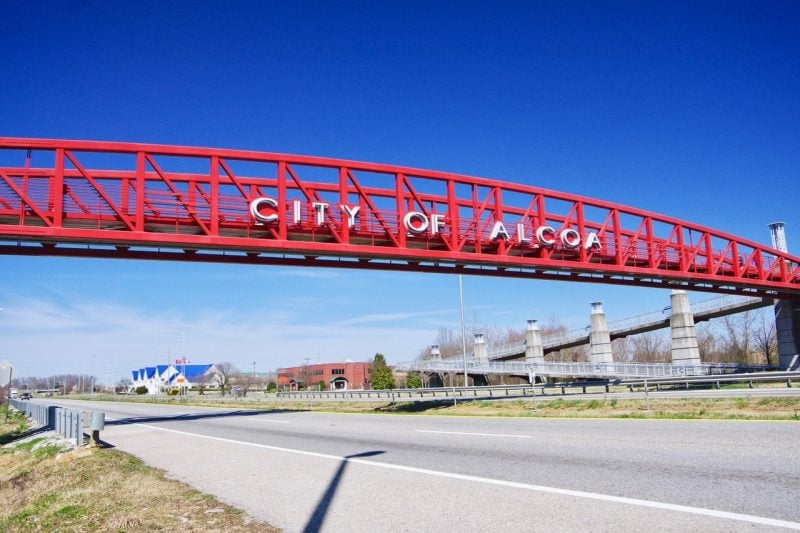
Alcoa is a suburb of Knoxville with a population of 11,635 residents. The city sits in Blount County and offers a sparse suburban atmosphere where most residents own their homes.
The community attracts many families seeking quality education. Alcoa’s public schools maintain highly rated status throughout the district.
Housing costs vary significantly across different neighborhoods within the city. The best areas are typically determined by median home values and market demand.
Alcoa receives a livability score of 63 out of 100. This ranking places it at #184 among Tennessee cities.
The poverty rate stands at 9.9%, which is 29% lower than the national average. However, the typical household earns $48,351 annually, below the national median of $67,500.
Residents tend to lean conservative politically. The city provides access to suburban amenities while maintaining proximity to Knoxville’s urban resources.
29. Goodlettsville
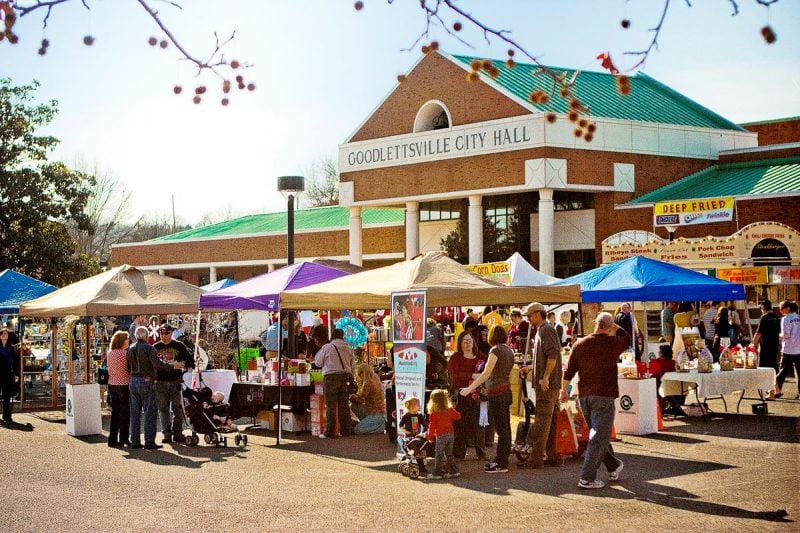
Goodlettsville offers residents a suburban lifestyle just north of Nashville. The city maintains a population of approximately 16,829 people.
Home prices in Goodlettsville exceed Tennessee’s state average of $218,916. The typical household earns $55,857 annually, which falls below the national median.
The poverty rate stands at 12.1%, which is 14% lower than the national average. This indicates better economic conditions for many residents.
Goodlettsville ranks favorably for families considering relocation. The city appears on multiple best places to live lists based on Census data and livability factors.
Residents benefit from proximity to Nashville while enjoying a quieter community atmosphere. Local amenities and neighborhoods provide various housing options for different budgets and preferences.
28. Kingsport
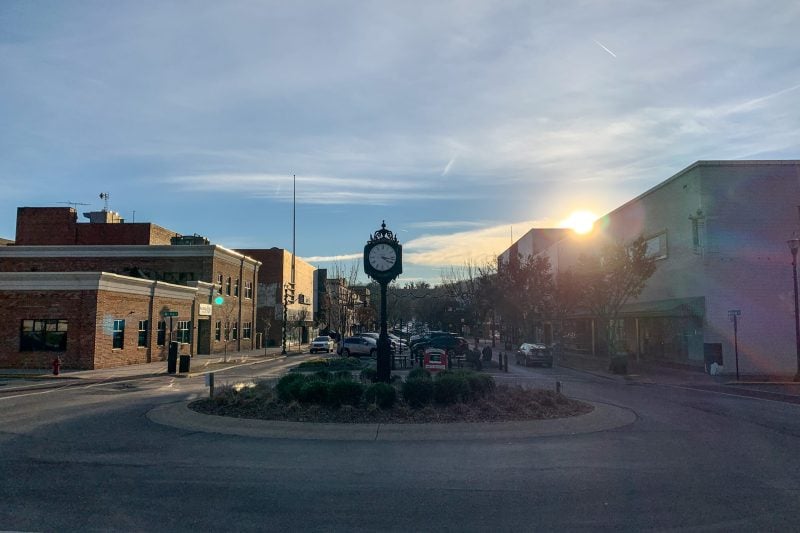
Kingsport sits in northeastern Tennessee near the Appalachian mountains and Holston River. The city consistently ranks among Tennessee’s best places to live according to multiple studies.
U.S. News named Kingsport to its Top 250 “Best Places to Live” list for 2025-2026. The city ranked third among six Tennessee cities that made the national list.
Preston Forest offers upscale homes with scenic views. Ridgefields features a historic country club community mixing older and newer properties. Colonial Heights provides family-friendly living with quality schools.
The city combines urban amenities with rural charm. Residents enjoy a relatively low cost of living compared to larger metropolitan areas. Crime rates remain below national averages in most neighborhoods.
Kingsport’s location in the Tri-Cities region provides access to Johnson City and Bristol. The area offers outdoor recreation opportunities in the nearby mountains and along the river.
27. Greeneville
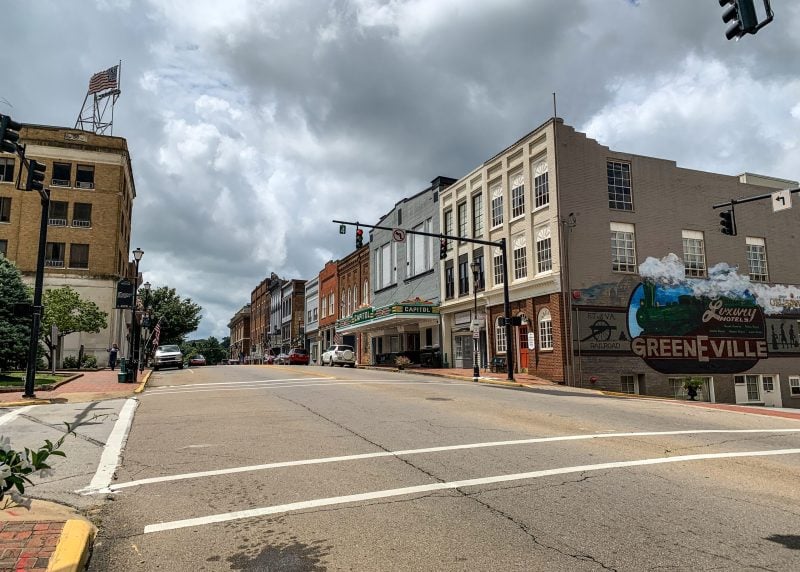
Greeneville sits in northeastern Tennessee with a population of approximately 14,938 residents. The city holds significant historical importance as the hometown of President Andrew Johnson.
The area played crucial roles during the American Revolution and Civil War. This deep historical foundation gives Greeneville a distinctive character among Tennessee communities.
Housing costs vary significantly across different neighborhoods in the city. The best residential areas are typically determined by median home values and market demand.
The typical household earns $41,020 annually, which falls below the national median of $67,500. The poverty rate stands at 18.2%, which exceeds the national average by 30%.
Despite economic challenges, the Greeneville metro area ranks among the top 100 cities in America for quality of life. The region consistently appears on lists of desirable places to live due to its affordable cost of living.
26. Ashland City
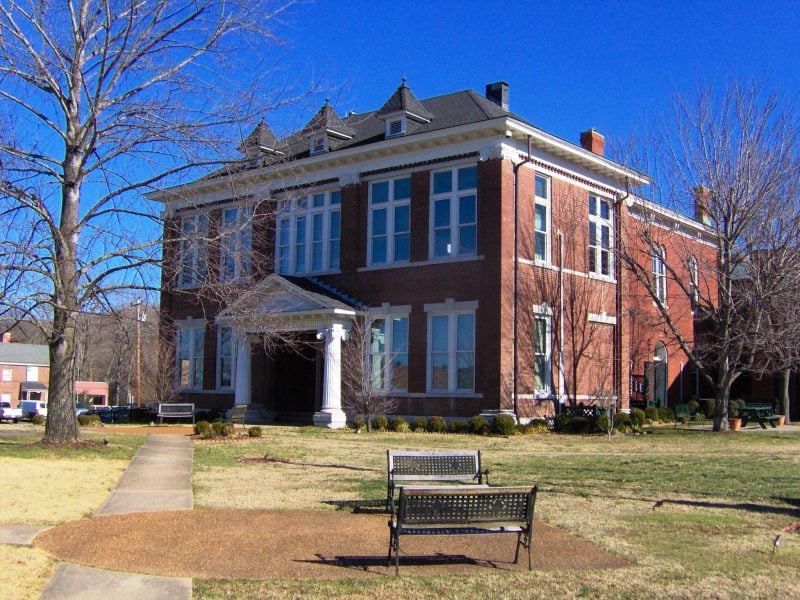
Ashland City sits 20 miles northwest of Nashville with a population of around 4,800 residents. The small town offers a quiet alternative to city living while maintaining convenient access to Tennessee’s capital.
The community features a cost of living index of 79.3%, making it one of Tennessee’s most affordable places to live. Residents benefit from significantly lower housing and living expenses compared to nearby Nashville.
The town provides access to the Cumberland River and various outdoor activities including fishing, hunting, and boating. Scenic nature parks and historic sites add to the area’s appeal for those seeking recreation opportunities.
Ashland City maintains a close-knit community atmosphere with local shops and charming small-town character. The location allows residents to enjoy rural living while staying within 30 minutes of Nashville’s employment and entertainment options.
25. Cleveland
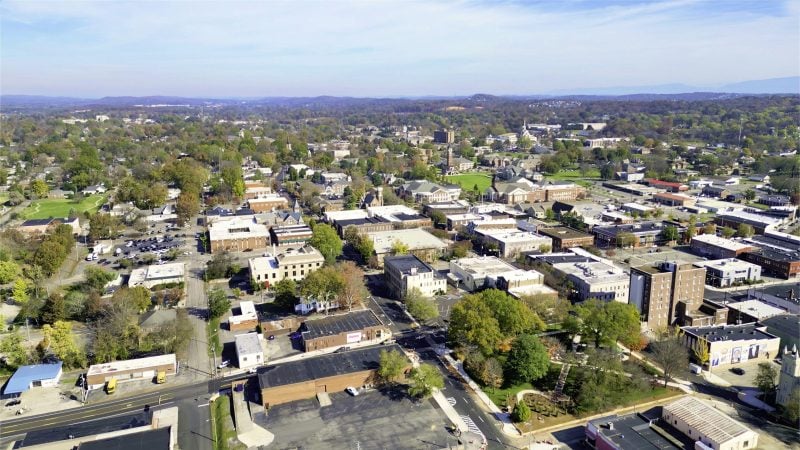
Cleveland sits in Bradley County in southeast Tennessee, positioned 30 miles northeast of Chattanooga. The city maintains a population of approximately 48,000 residents and offers a dense suburban atmosphere.
Most residents own their homes in Cleveland. The community attracts families and young professionals who appreciate the small-town environment with growing opportunities.
The local economy centers around manufacturing and education sectors. Cleveland’s location provides access to outdoor recreation in the nearby Appalachian region.
Downtown Cleveland features historic areas undergoing revitalization efforts. Mouse Creek offers newer developments with modern amenities, while Hopewell provides family-friendly neighborhoods with quality schools.
The city ranks well for overall livability due to low crime rates and good air quality. Public schools perform above average compared to state standards.
Cleveland combines small-town charm with practical amenities and proximity to larger metropolitan areas.
24. Cookeville
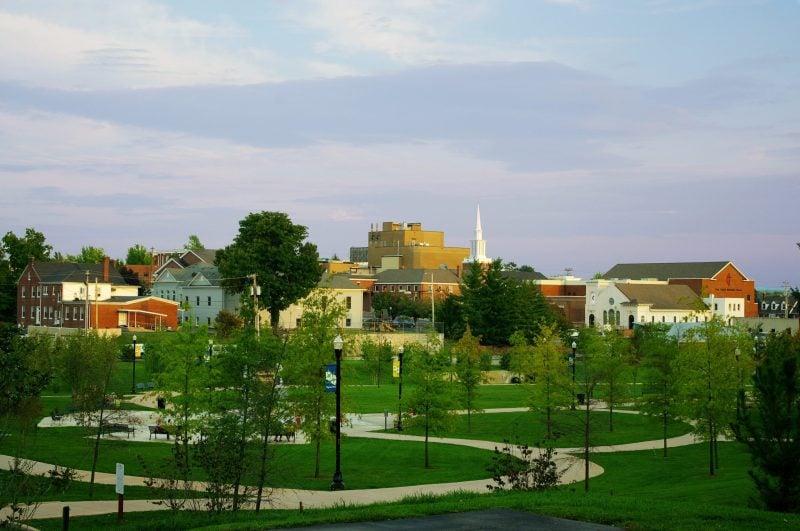
Cookeville ranks as one of Tennessee’s most livable cities, earning recognition for its exceptional affordability and quality of life. The city holds the #16 spot out of 600 cities nationwide for overall livability.
Located in Putnam County, Cookeville offers residents a dense suburban atmosphere with highly rated public schools. The community attracts many young professionals who appreciate the small-town charm combined with modern amenities.
Housing costs remain remarkably low, making Cookeville one of the most affordable places to live in the nation. Most residents rent their homes, though the real estate market offers diverse neighborhood options with varying home values.
The city features numerous parks and recreational opportunities alongside local eateries and scenic rural roads. Cookeville provides proximity to larger cities while maintaining its distinctive small-town character that residents find appealing.
23. Sevierville

Sevierville offers residents an attractive combination of affordability and natural beauty in East Tennessee. The city sits near the Great Smoky Mountains, providing easy access to outdoor recreation and scenic landscapes.
The cost of living in Sevierville remains below national averages. Housing costs are particularly reasonable compared to larger metropolitan areas. This affordability attracts both retirees and families seeking value.
The local economy benefits from tourism, creating numerous business opportunities and employment options. Dolly Parton’s birthplace draws millions of visitors annually, supporting restaurants, hotels, and entertainment venues.
Crime rates in Sevierville exceed state averages for both violent and property crimes. The city has increased police presence and community programs to address safety concerns.
Sevierville functions as a small town with limited cultural diversity compared to urban centers. Residents appreciate the close-knit community atmosphere and proximity to world-class attractions like Dollywood and the national park.
22. Johnson City
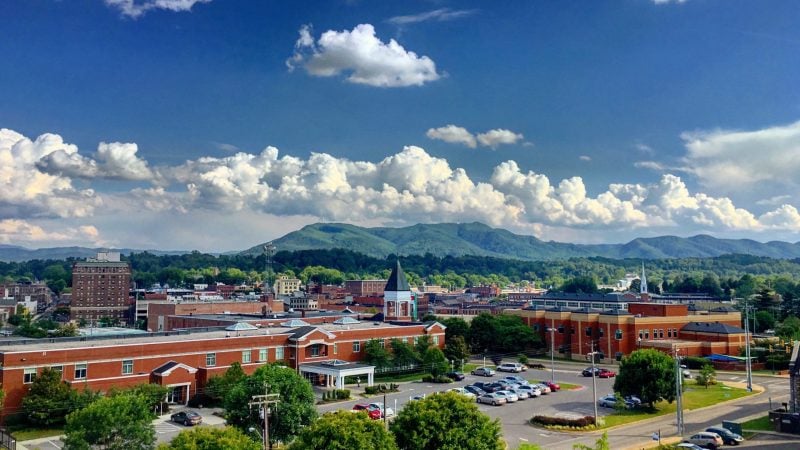
Johnson City sits in Northeast Tennessee’s valley between the Appalachian and Blue Ridge Mountains. The city has a population of 71,455 residents and borders both Virginia and North Carolina.
East Tennessee State University calls Johnson City home, creating a college town atmosphere. Most residents rent their homes, giving the area a dense suburban feel.
The city offers affordable living costs compared to national averages. Multiple parks throughout Johnson City provide outdoor recreation opportunities for residents.
Healthcare represents a growing sector with several hospitals and medical centers located in the area. The Cherokee National Forest and Appalachian Trail sit nearby for outdoor enthusiasts.
Johnson City earned recognition as one of Tennessee’s best places to live in recent studies. The city features diverse dining options and maintains the nickname “Little Chicago” among locals.
21. Gallatin
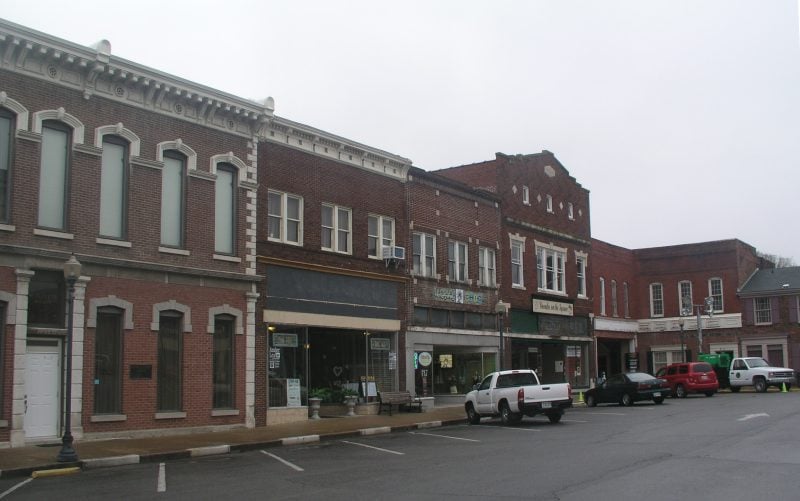
Gallatin sits 30 miles northeast of Nashville in Sumner County. The city serves as the county seat with a population of approximately 44,431 residents.
This suburban community offers affordable living costs compared to nearby Nashville. Families and young professionals are drawn to the area’s reasonable housing prices and small-town atmosphere.
The city provides highly rated public schools that attract families with children. Most residents own their homes in this sparse suburban environment.
Gallatin’s proximity to Nashville gives residents access to major city amenities while maintaining a quieter lifestyle. The commute to Tennessee’s capital remains manageable for working professionals.
The area has experienced steady population growth over recent decades. This growth reflects the community’s appeal to those seeking quality of life outside major urban centers.
Local amenities and scenic beauty add to Gallatin’s attractiveness as a residential choice.
20. Lebanon
Lebanon sits 25 miles east of Nashville in Wilson County, offering small-town charm with urban accessibility. The city has a population of approximately 42,000 residents and was incorporated in 1801.
The median household income is $58,859, which falls below the national average of $67,500. The poverty rate stands at 14.7%, about 5% higher than the national average.
Lebanon provides a sparse suburban atmosphere where most residents own their homes. The area attracts families and young professionals who appreciate the conservative-leaning community values.
Public schools in Lebanon receive high ratings, making it attractive for families with children. The city offers excellent educational opportunities within the Wilson County school system.
Housing costs remain more affordable than Nashville while maintaining convenient access to the larger metropolitan area. Neighborhoods vary significantly in quality and home values throughout the city.
19. Jonesborough
Jonesborough stands as Tennessee’s oldest town, nestled in the scenic Appalachian Mountains of Upper East Tennessee. The small community offers old-fashioned charm combined with rich historical significance.
The town provides a peaceful escape from city life with its rural countryside setting. Close-knit neighbors and friendly community atmosphere define daily life in Jonesborough.
Housing affordability ranks exceptionally high, making it attractive for various budgets. Crime and safety scores reach impressive levels, contributing to the town’s appeal for families.
The area offers decent dining options while maintaining its small-town character. Local amenities serve residents’ basic needs without overwhelming the peaceful environment.
Mountain views and natural beauty surround the community. The town attracts those seeking tranquility while remaining connected to Tennessee’s historical roots.
Jonesborough’s combination of affordability, safety, and scenic location makes it suitable for retirees and families alike.
18. Signal Mountain
Signal Mountain ranks as one of Tennessee’s top places to live. This Hamilton County suburb of Chattanooga has a population of 8,861 residents.
The town offers breathtaking views of the Tennessee Valley. Its peaceful atmosphere attracts those seeking to escape busy city life.
Signal Mountain excels in key livability metrics. The area scores highly for low crime rates, education quality, and available amenities.
Most residents own their homes in this sparse suburban community. The town particularly appeals to retirees and tends to attract conservative residents.
Home prices exceed Tennessee’s state average of $218,916. The higher cost reflects the desirable location and quality of life.
Signal Mountain receives strong ratings for its economy and job market. The combination of safety, educational opportunities, and employment options makes it an attractive place to call home.
17. Ooltewah
Ooltewah sits in the foothills of the Appalachian Mountains, offering residents beautiful natural scenery and small-town charm. The community is located just minutes from Chattanooga, providing easy access to urban amenities while maintaining a peaceful atmosphere.
The town has earned recognition for its low crime rates and high livability scores. Residents enjoy access to various recreational activities including mountain biking, hiking, and golfing.
Ooltewah features diverse neighborhoods with varying home values and characteristics. The area offers options for different lifestyle preferences, from large backyards to walkable communities near shopping and dining.
Local amenities include restaurants, stores, and entertainment options. The proximity to Chattanooga expands access to employment opportunities and cultural attractions while preserving the benefits of suburban living.
16. Bartlett
Bartlett serves as a family-friendly suburb of Memphis, offering residents easy access to urban amenities while maintaining a quieter residential atmosphere. The city attracts families seeking quality schools and safe neighborhoods.
The Bartlett City Schools system ranks among Tennessee’s best with one of the state’s highest graduation rates. Multiple private schools and daycare centers provide additional educational options for families.
Three notable neighborhoods stand out in Bartlett. Ellendale features larger homes with spacious lots. Brunswick Farms offers newer development with modern community amenities. Rivercrest provides an established neighborhood with diverse housing styles.
The city’s low cost of living makes it attractive for budget-conscious residents. Numerous parks and recreational facilities serve the community year-round.
Bartlett’s diverse population contributes to its welcoming environment. The area includes multiple church denominations and sits near premier shopping districts, combining convenience with community amenities.
15. Collierville
Collierville ranks as the 8th best city to live in Tennessee. This suburb of Memphis offers residents a rural feel while maintaining convenient access to urban amenities.
The city has a population of 51,212 and sits in Shelby County. Most residents own their homes rather than rent.
Interstate 240 connects Collierville to downtown Memphis within 30 minutes. This makes it ideal for commuters who want suburban living with city job opportunities.
The area features excellent public schools with high ratings. Families are drawn to the strong educational system and safe neighborhoods.
Three notable residential areas include Historic Town Square, Schilling Farms, and Estanaula Trails. Each offers different housing styles and community features.
Collierville provides numerous parks and recreational facilities. The cost of living remains lower than many Tennessee cities while unemployment stays low.
14. Maryville
Maryville sits in east Tennessee’s foothills, just 17 miles south of Knoxville. This peaceful town houses over 30,000 residents who enjoy small-town charm with urban accessibility.
The downtown area features locally owned restaurants, bars, and boutiques. Several venues offer live country music entertainment for residents and visitors.
Great Smoky Mountains proximity provides excellent outdoor recreation opportunities. Residents can enjoy canoeing on the Little River or hiking in nearby Townsend State Park.
The town maintains lower crime rates and higher quality of life compared to many Tennessee cities. Neighborhoods vary significantly in quality and home values throughout different areas.
Maryville’s location offers the best of both worlds. Residents access small-town tranquility while remaining close to Knoxville’s employment and cultural opportunities.
The Blount County Library serves as a popular community gathering place. Shopping centers and diverse dining options cater to various tastes and preferences throughout the area.
13. Spring Hill
Spring Hill stands out as one of Tennessee’s most desirable communities, expertly balancing rapid growth with small-town charm. The city attracts residents seeking suburban tranquility paired with modern conveniences.
Located in Maury County, Spring Hill offers diverse neighborhoods with varying home values and characteristics. Each area provides unique amenities that cater to different lifestyle preferences.
The community benefits from its proximity to Nashville while maintaining its distinct identity. Residents enjoy access to cultural attractions like Graymere Country Club and historic sites such as Rippavilla Plantation.
Spring Hill’s appeal extends to retirees, earning recognition from the American Association of Retirement Communities for its peaceful atmosphere and scenic beauty. The area continues expanding with new suburban developments.
The city provides excellent livability factors including reasonable commute times, quality healthcare access, and educational opportunities that make it attractive to families and professionals alike.
12. Mount Juliet
Mount Juliet stands out as one of Tennessee’s premier suburban communities. This Wilson County city offers residents a sparse suburban feel with excellent homeownership rates.
The city serves as a Nashville suburb with a population of 40,828. Most residents are families and young professionals who appreciate the community’s conservative-leaning atmosphere.
Mount Juliet provides exceptional educational opportunities through highly rated public schools. The strong school system attracts families seeking quality education for their children.
Wilson County, where Mount Juliet is located, ranks as Tennessee’s fastest-growing county according to 2025 Census projections. This growth reflects the area’s increasing popularity and economic strength.
Outdoor enthusiasts find numerous recreational venues throughout the city. The proximity to Nashville provides additional employment and entertainment opportunities while maintaining a quieter residential environment.
Money Magazine recognized Mount Juliet among America’s Best Places to Live, citing job opportunities and quality of life factors.
11. Hixson
Hixson operates as a rural neighborhood within Chattanooga, offering residents a suburban feel with convenient access to urban amenities. The area features primarily medium to large single-family homes with three to five bedrooms.
Several neighborhoods stand out for their quality and desirability. Northgate-Big Ridge, Falling Water-Browntown, and Valleybrook rank among the top residential areas in Hixson.
The community shows significant variation in neighborhood quality and home values across different sections. Market data indicates that the most desirable areas tend to have lower crime rates and higher property values.
Hixson provides residents with detailed crime mapping and safety statistics to help evaluate different neighborhoods. The area offers a mix of housing options from apartment complexes to larger family homes.
Transportation along major routes like Hixson Pike connects residents to the broader Chattanooga metropolitan area while maintaining the neighborhood’s more relaxed atmosphere.
10. Smyrna
Smyrna stands out as one of Tennessee’s premier suburban communities. This Nashville suburb houses approximately 55,000 residents in Rutherford County.
The city offers a sparse suburban feel where most residents own their homes. Young professionals and families make up the majority of the population.
Home prices in Smyrna exceed the state average of $218,916. The higher cost reflects the desirability of the area and quality of life residents enjoy.
Crime rates remain low throughout the community. Good schools serve families with children of all ages.
The Smyrna Historic District features well-preserved older homes and strong community connections. The Sam Ridley Parkway Corridor provides convenient access to shopping and dining options.
Residents benefit from easy access to Nashville’s entertainment and dining scene. The location allows for suburban living while maintaining proximity to urban amenities.
9. Hendersonville
Hendersonville stands as one of Tennessee’s premier suburbs, located in Sumner County just outside Nashville. The city serves a population of 62,390 residents who enjoy a dense suburban atmosphere.
Most residents own their homes in this well-established community. The area offers beautiful access to Old Hickory Lake, providing water activities and scenic views for outdoor enthusiasts.
Notable neighborhoods include Lakeside Park with its waterfront appeal and Indian Lake Peninsula, an upscale area featuring larger homes and country club access. Monthaven attracts families with quality schools and parks.
The cost of living remains 14% lower than the national average, making Hendersonville economically attractive. Home prices exceed the Tennessee state average of $218,916, reflecting the area’s desirability.
Hendersonville earned recognition as the 16th best place to live nationally, showcasing its strong job market and quality of life factors.
8. Clarksville
Clarksville sits along the Cumberland River in Montgomery County with a population exceeding 150,000 residents. The city attracts young families with an average resident age of 30 years.
The local economy remains strong and continues growing steadily. Crime rates stay low while the education system receives excellent ratings from ranking organizations.
Outdoor enthusiasts enjoy Dunbar Cave State Park and water activities on the Cumberland River. Rock climbing opportunities exist at nearby locations for adventure seekers.
The city offers diverse dining options and retail establishments. Cultural attractions include art galleries and museums throughout the area.
Clarksville’s location provides easy access to Nashville’s music scene and the Appalachian mountains. Residents benefit from this central positioning while enjoying local amenities.
Housing options vary significantly across different neighborhoods. The real estate market shows considerable disparity in home values between areas.
7. Germantown
Germantown stands as one of Tennessee’s premier suburban communities with a population of 40,812 residents. This Memphis suburb consistently ranks among the top places to live in the state.
The city earned a livability score of 81 out of 100 and ranks third among 57 Tennessee cities for overall quality of life. Safety remains a primary strength, with Germantown recognized as one of the state’s safest cities.
Families find excellent educational opportunities through the Germantown Municipal School District. The community offers abundant parks, restaurants, and recreational facilities that enhance daily life.
Most residents own their homes in this sparse suburban environment. Popular neighborhoods include Nottoway’s gated community, historic Poplar Estates, and the family-friendly Farmington area.
The city attracts young professionals and families seeking a strong community atmosphere. Low crime rates and quality amenities make Germantown particularly appealing for those raising children.
6. Murfreesboro
Murfreesboro stands as one of Tennessee’s fastest-growing cities, located just 35 miles southeast of Nashville. The city combines small-town charm with modern convenience.
The community offers excellent schools and abundant parks throughout the area. Residents enjoy a dense suburban atmosphere where most people own their homes.
Murfreesboro consistently ranks among the best places to live in Tennessee. The city receives high marks for safety, amenities, and overall quality of life.
The local economy remains diverse and robust, providing various employment opportunities. Educational options span from elementary schools through higher education institutions.
Housing options cater to different budgets and lifestyle preferences. The real estate market offers choices for families, young professionals, and retirees.
Downtown Murfreesboro features a thriving business district with shops and restaurants. The city’s proximity to Nashville provides access to metropolitan amenities while maintaining its own distinct character.
5. Knoxville
Knoxville ranks as Tennessee’s third-largest city and consistently earns recognition as one of the most affordable places to live in the United States. The city offers below-average living costs while maintaining high quality of life standards.
The diverse economy provides strong job growth opportunities across multiple sectors. Residents benefit from excellent walkability scores and access to quality public schools throughout the metro area.
Knoxville’s neighborhoods vary significantly in character and home values. From historic districts with charming older homes to modern suburban developments, the city accommodates different lifestyle preferences and budgets.
The location in eastern Tennessee provides easy access to outdoor recreation opportunities. Southern cuisine and cultural attractions add to the city’s appeal for families and young professionals.
Multiple ranking systems consistently place Knoxville among top Tennessee destinations for affordability and livability.
4. Brentwood
Brentwood consistently ranks as one of Tennessee’s top communities for families and overall quality of life. This affluent suburb of Nashville offers residents excellent public schools and low crime rates.
The city attracts families seeking safe neighborhoods with strong educational opportunities. Brentwood’s proximity to Nashville provides easy access to employment and entertainment while maintaining a quieter residential atmosphere.
Housing options range from luxury estates to family-friendly subdivisions. The community features well-maintained parks, recreational facilities, and local amenities that enhance daily living.
Residents benefit from Brentwood’s strategic location in Williamson County. The area combines suburban comfort with convenient access to Nashville’s business districts and cultural attractions.
The city’s reputation for safety and excellent schools makes it particularly appealing to professionals and families. Brentwood maintains its status as a premier residential destination in Middle Tennessee.
3. Franklin
Franklin sits 22 miles southwest of Nashville, offering small-town charm with big-city access. This historic city in Williamson County has earned recognition as one of Tennessee’s premier places to live.
The city consistently appears on national “Best Places to Live” lists. Money Magazine ranked Franklin eighth in 2020 among cities with populations between 10,000 and 100,000.
Franklin’s downtown features a 16-block stretch called the Great American Main Street. Historic buildings dating from before the Civil War create an authentic Southern atmosphere.
The city attracts families and entrepreneurs seeking quality of life. Most of Franklin’s 85,575 residents own their homes in neighborhoods with dense suburban characteristics.
Residents enjoy numerous restaurants, coffee shops, and parks throughout the community. The city combines historic preservation with modern amenities and innovative business opportunities.
2. Chattanooga
Chattanooga has earned recognition among Tennessee’s top living destinations. The city ranks in Livability’s Top 100 Places to Live nationwide.
Located in southeastern Tennessee, Chattanooga offers scenic mountain views and outdoor recreation opportunities. The Tennessee River runs through the city center.
Downtown Chattanooga has transformed from a neglected area into a vibrant neighborhood. Residents enjoy award-winning restaurants, nightlife, and cultural attractions.
The city provides a diverse economy with growing job opportunities. Housing costs remain affordable compared to many metropolitan areas.
Chattanooga scores well for its mix of amenities, education options, and cultural diversity. The area attracts young professionals and retirees alike.
Public transportation includes innovative electric buses and bike-sharing programs. The city emphasizes sustainable urban development.
Residents access quality healthcare systems and educational institutions. Multiple neighborhoods offer different lifestyle options throughout the metro area.
1. Nashville
Nashville stands as Tennessee’s capital and largest city, offering a dynamic blend of music heritage and modern amenities. The city serves as the heart of country music while maintaining diverse economic opportunities.
Downtown Nashville provides urban living with easy access to entertainment venues, restaurants, and cultural attractions. Residents enjoy walkable neighborhoods and a thriving nightlife scene.
The Nashville metro area includes several highly-rated suburban communities. Spring Hill ranks among Tennessee’s top places to live, combining rural beauty with suburban convenience.
Housing options range from downtown condos to spacious suburban homes in surrounding counties like Williamson and Wilson. The area offers quality public schools and reasonable cost of living compared to other major cities.
Nashville’s job market spans healthcare, technology, and entertainment industries. The city attracts young professionals and families seeking career growth and cultural amenities in a Southern setting.
Key Factors When Choosing Where to Live in Tennessee
Tennessee’s diverse geography and economy create varying living conditions across the state. The cost of living remains below national averages in most areas, while job markets differ significantly between urban centers and rural communities.
Cost of Living Overview
Tennessee offers substantial savings compared to national averages across most expense categories. The state ranks among the most affordable in the United States, with housing costs typically 15-25% below the national median.
Housing represents the largest cost advantage. Median home prices in Tennessee range from $180,000 in smaller towns to $400,000+ in premium Nashville suburbs. Rental markets show similar patterns, with one-bedroom apartments averaging $800-1,200 in major cities.
Tennessee imposes no state income tax on wages and salaries. Property taxes remain relatively low at 0.64% average effective rate. Sales tax rates vary by location, ranging from 7% to 9.75% when combining state and local taxes.
Utility costs run approximately 10% below national averages. Groceries and transportation expenses align closely with national medians. Healthcare costs vary significantly by region but generally track below coastal state levels.
Job Market and Economic Growth
Tennessee’s economy centers around healthcare, manufacturing, agriculture, and tourism industries. Major employers include FedEx, Nissan, Volkswagen, and numerous healthcare systems across the state.
Nashville dominates the state’s job market with healthcare, music industry, and financial services driving growth. The metro area consistently posts unemployment rates below national averages and supports diverse career opportunities.
Memphis serves as a logistics and transportation hub due to its Mississippi River location. Manufacturing jobs remain plentiful, though wage growth lags behind Nashville and Knoxville markets.
Knoxville benefits from University of Tennessee employment and Oak Ridge National Laboratory research positions. The region shows steady job growth in technology and advanced manufacturing sectors.
Rural areas face limited employment options, with agriculture, small manufacturing, and service jobs predominating. Remote work opportunities have expanded options for residents in smaller communities.
Public Education Quality
Tennessee’s public education system shows mixed performance across different regions and districts. Statewide rankings place Tennessee in the bottom half nationally, though individual districts vary significantly in quality.
Wealthy suburban districts consistently outperform state averages. Franklin, Brentwood, and similar affluent areas rank among the South’s top school systems. These districts benefit from higher per-pupil spending and parental involvement.
Urban districts face greater challenges with funding and student outcomes. Memphis and Nashville city schools show improvement in recent years but still lag behind suburban counterparts.
Tennessee implemented significant education reforms including teacher evaluation systems and school choice options. Charter schools operate in major metropolitan areas, providing alternatives to traditional public schools.
Higher education options include University of Tennessee campuses, Vanderbilt University, and numerous community colleges. In-state tuition rates remain competitive with neighboring states.
Healthcare Access
Healthcare availability varies dramatically between urban and rural Tennessee communities. Major cities offer world-class medical facilities, while rural areas face physician shortages and limited specialty care access.
Nashville houses multiple nationally-ranked hospitals including Vanderbilt University Medical Center and Saint Thomas Health System. The city serves as a regional medical hub for the Southeast.
Memphis maintains strong healthcare infrastructure with Methodist Le Bonheur Healthcare and Regional One Health providing comprehensive services. The University of Tennessee Health Science Center contributes research and specialty care.
Rural healthcare challenges include hospital closures and specialist shortages. Many residents travel significant distances for advanced medical care or specialty treatments.
Tennessee expanded Medicaid coverage in recent years, improving healthcare access for low-income residents. Insurance marketplace options provide competitive coverage in most regions.
Climate and Weather
Tennessee experiences a humid subtropical climate with four distinct seasons. Temperatures rarely reach extreme levels, making outdoor activities possible year-round across most of the state.
Summer temperatures average 75-85°F with high humidity levels creating heat index values above 90°F. Air conditioning costs increase utility bills during peak summer months.
Winter conditions remain mild compared to northern states. Average winter temperatures range from 35-50°F, with occasional snow events more common in eastern mountainous regions.
Spring and fall offer ideal weather conditions with moderate temperatures and lower humidity. These seasons provide optimal conditions for outdoor recreation and tourism activities.
Severe weather risks include occasional tornadoes during spring months and thunderstorms throughout warm seasons. The state experiences minimal hurricane impact despite its southeastern location.
Lifestyle and Community Considerations
Tennessee communities offer diverse cultural scenes ranging from Nashville’s music industry to smaller towns with local festivals and outdoor recreation. Safety varies significantly between urban centers and rural areas, while transportation options depend heavily on location and access to major highways.
Cultural and Recreational Opportunities
Nashville stands as Tennessee’s cultural epicenter with the Country Music Hall of Fame, live music venues, and year-round festivals. The city hosts over 180 live music venues and attracts millions of visitors annually for its entertainment offerings.
Memphis provides rich blues and soul music history through Beale Street, Graceland, and the National Civil Rights Museum. The city’s barbecue scene and annual events like Memphis in May create strong community connections.
Knoxville offers theater productions, art galleries, and the proximity to University of Tennessee sporting events. Smaller cities like Franklin and Chattanooga feature historic downtown districts with local shops, restaurants, and seasonal festivals.
Key Cultural Assets by Region:
- East: Dollywood, Great Smoky Mountains National Park events
- Middle: Grand Ole Opry, Tennessee State Fair
- West: Graceland, Sun Studio tours
Rural communities throughout Tennessee host county fairs, farmers markets, and local music venues that maintain traditional Southern culture.
Safety and Crime Rates
Crime rates vary dramatically across Tennessee’s cities and towns. Violent crime rates in Memphis and Nashville exceed national averages, while smaller communities like Brentwood and Germantown maintain significantly lower crime statistics.
Property crime affects urban areas more than rural locations. Memphis reports higher burglary and theft rates compared to mid-size cities like Murfreesboro or Johnson City.
Rural Tennessee communities generally experience lower overall crime rates. Towns with populations under 50,000 typically report violent crime rates well below state and national averages.
Crime Rate Categories:
- Low: Brentwood, Germantown, Collierville
- Moderate: Knoxville, Chattanooga, Franklin
- Higher: Memphis, Nashville (certain neighborhoods)
Residents should research specific neighborhoods within larger cities, as safety can vary significantly between districts.
Transportation and Commute Times
Nashville’s traffic congestion creates longer commute times, especially during rush hours on I-440 and I-65. Average commute times in Davidson County exceed 25 minutes, with some suburban areas reaching 35-40 minutes.
Memphis traffic flows more efficiently than Nashville, though I-240 and I-40 intersections experience delays. Most Memphis commutes average 20-25 minutes within the metropolitan area.
Smaller cities like Chattanooga, Knoxville, and Johnson City offer shorter commute times, typically 15-20 minutes for most residents. Rural areas provide minimal traffic congestion but require longer distances to reach employment centers.
Public Transportation Options:
- Nashville: WeGo bus system, limited rail
- Memphis: MATA bus routes
- Other cities: Limited public transit options
Most Tennessee residents rely on personal vehicles for daily transportation needs.
Access to Outdoor Activities
East Tennessee provides extensive hiking, camping, and fishing opportunities through the Great Smoky Mountains National Park and Cherokee National Forest. Popular activities include whitewater rafting on the Ocoee River and hiking trails like Cataract Falls.
Middle Tennessee offers state parks, lakes, and the Cumberland River for boating and fishing. Percy Priest Lake and Old Hickory Lake provide water sports and recreational opportunities near Nashville.
West Tennessee features Reelfoot Lake for fishing and bird watching, plus Mississippi River access points. The region offers fewer mountain activities but provides excellent waterfowl hunting and fishing options.
Outdoor Recreation by Type:
- Hiking/Camping: Great Smoky Mountains, Fall Creek Falls
- Water Sports: Tennessee River, Kentucky Lake
- Winter Sports: Ober Mountain (limited skiing)
- Golf: Courses available statewide
Year-round mild climate allows outdoor activities in most seasons, though summer heat and humidity can limit midday activities.





